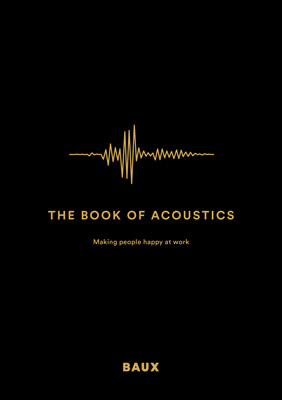Chapter 2.0 Essential measurments
2.2.4 Sound absorption
All objects and materials have acoustic properties. They either absorb, reflect or transmit the sound waves they come into contact with. And the degree to which they do these things is dependent on frequency.
To understand the acoustic characteristics of a space it is important to consider how existing or planned objects, materials— and even people—might impact the interior acoustic environment. Generally, soft and porous materials and objects are more absorbent than hard and reflective materials. While light materials and objects transmit sound better than dense and heavy materials.
Absorption coefficients help us understand how absorbent or reflective a given object, material or surface is. A coefficient of absorption measures how absorptive or reflective a material is on average, when exposed to different sound frequencies. For example, a material that has a coefficient of 0.3 at a given frequency absorbs 30% of the sound energy it comes into contact with. At the same time, this tells us that the remaining 0.7 or 70% of sound energy, which is not absorbed, is reflected back into the room. Generally, a sound absorption coefficient of 0.20 and higher is considered to be absorptive, and a coefficient of 0.19 and lower is considered to be reflective.
More absorbent
Carpet
People
Foam
Furniture
Insulation
Textiles
More reflective
Brick
Dense concrete
Glass
Marble
Metal
Hardwood
Occupancy rate
People absorb sound too. Make sure you factor in the number of people that will occupy a space before approaching acoustic treatment.
Frequency (Hz)
Average Sound Absorption per person
125
0.29
250
0.43
500
0.51
1000
0.68
2000
0.71
4000
0.73
Volume of air
Air has a natural ability to absorb sound. The amount of sound absorbed by air in an indoor space depends on the level of humidity and the distance the sound wave travels.

